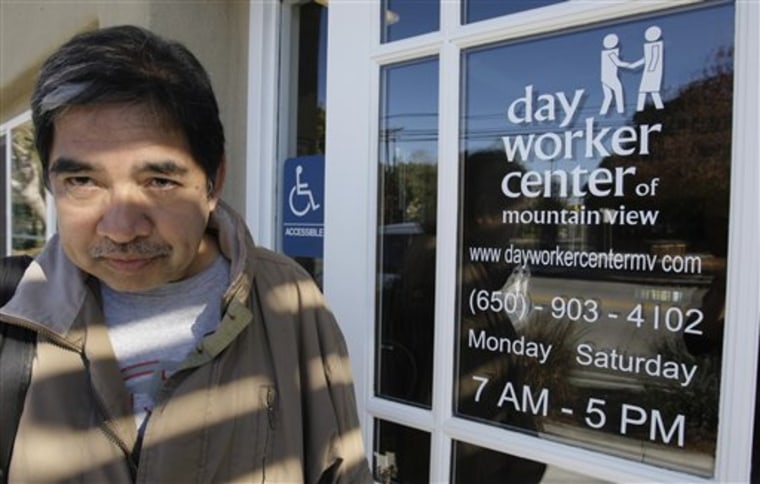The number of people applying for unemployment benefits plunged last week to the lowest level in nearly three years, boosting hopes that companies will step up hiring this year as the economy strengthens.
Applications sank by a seasonally adjusted 36,000 to 383,000, the lowest point since early July 2008. A Labor Department official said claims were still unwinding some of the weather effects that pushed up applications last month.
Unemployment applications reflect the level of layoffs, but also can indicate whether companies are willing to hire.
"The sharp drop bodes well for February job creation," said economist Ellen Beeson Zentner at Bank of Tokyo-Mitsubishi UFJ.
Applications below 425,000 tend to signal modest job growth. But they would need to dip consistently to 375,000 or below to indicate a significant and steady decline in the unemployment rate.
The data, coming on the heels of Friday's report showing the economy created a paltry 36,000 jobs in January, added to other employment indicators that have pointed to a gain in momentum in the labor market, however.
Economists also cautioned not to read too much into the weekly claims data, however, which are still unwinding some of the distortions related to the wintry weather. But they remained optimistic about the general trend toward a gradually improving job market.
"While it is true that claims should be below the 400k-level given improvements in the jobs market, the fact that it had suffered from unanticipated weather distortions -- and will continue in the near term to do so -- means that today's improvement could be mitigated by a couple 'correctional shifts.' The level however will start to consistently fall below 380K in the spring," said Vimombi Nshom of IFR Economics.
The four-week moving average of unemployment claims -- a better measure of underlying trends - dropped 16,000 to 415,500 last week.
The number of people still receiving benefits under regular state programs after an initial week of aid declined 47,000 to 3.89 million in the week ended January 29 from an upwardly revised 3.94 million the prior week.
Economists had expected so-called continuing claims to fall to 3.90 million from a previously reported 3.93 million.
The number of people on emergency unemployment benefits increased 100,366 to 3.76 million in the week ended January 22, the latest week for which data is available. A total of 9.4 million people were claiming unemployment benefits during that period under all programs.
In addition, businesses at the wholesale level added to their inventories in December at a healthy clip even though demand for their products slowed. The expectation is that rising demand from businesses will keep factories humming.
Wholesale businesses boosted inventories 1 percent in December, pushing the total to $430.5 billion, the Commerce Department reported Thursday. Economists consider that a healthy level for inventories. It is 11.4 percent above the low reached in September 2009 when companies were slashing their stockpiles in response to a deep recession.
Sales at the wholesale level rose 0.4 percent in December, a smaller than expected increase and the poorest showing since last July. However, the December advance followed a strong 1.9 percent rise in November.
